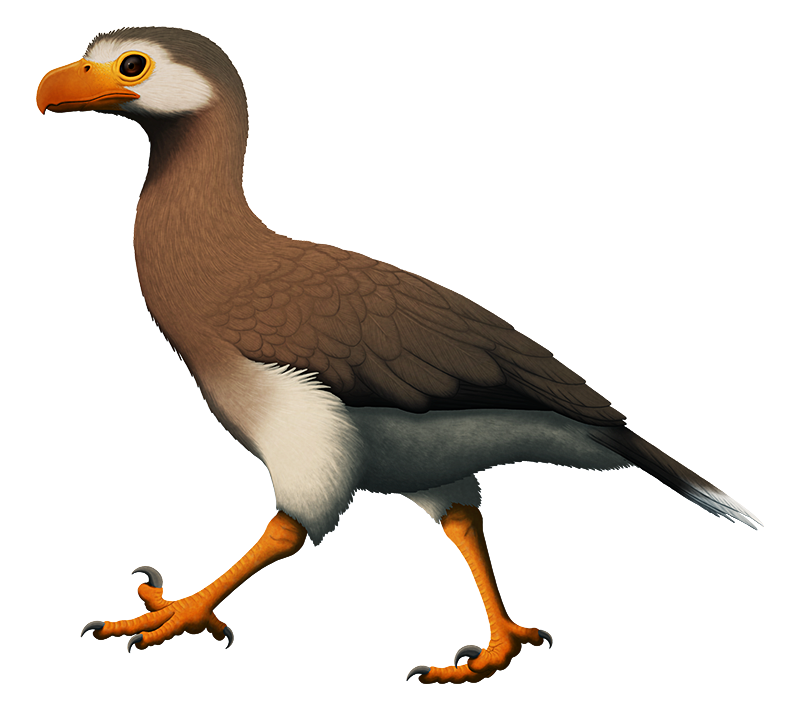Many modern predatory birds have enlarged claws on their second toes, similar to those of their paravian dinosaur ancestors – with seriemas being a particularly good example.
Seriemas are part of a lineage known as cariamiformes, highly terrestrial birds that were widespread across most of the world but are today represented today by only two living species in South America. During the Cenozoic this group repeatedly evolved into large predatory flightless forms like the the phorusrhacids and bathornithids, and were probably the closest avians ever got to recreating the “carnivorous theropod” body plan and ecological niche.
And yet none of them ever seem to have experimented with more dromaeosaurid-like claws.
…With one known exception.
Qianshanornis rapax here lived in East China during the mid-Paleocene, about 63 million years ago. It was a small cariamiform, probably around 30cm tall (1″), and is only known from fragmentary fossil material – but part of those fragments was a fairly well-preserved foot. And the bones of its second toe were unlike any other known Cenozoic bird, shaped incredibly similarly to those of dromaeosaurids and suggesting it may have had the same sort of big hyperextendible “sickle claw”.
While it had sturdy legs and short wings, and probably spent a lot of time walking on the ground like other cariamiformes, it was probably also still a fairly strong flier based on the known anatomy of its arms and shoulders.
Unfortunately, though, its head and claws were entirely missing, so without more fossil discoveries it’s hard to say anything definite about its ecology. I’ve restored it here based on other predatory cariamiformes, but since it was also closely related to a herbivorous species it’s not clear whether Qianshanornis was truly a dromaeosaur-mimic or if something else was going on with that unique second toe.

